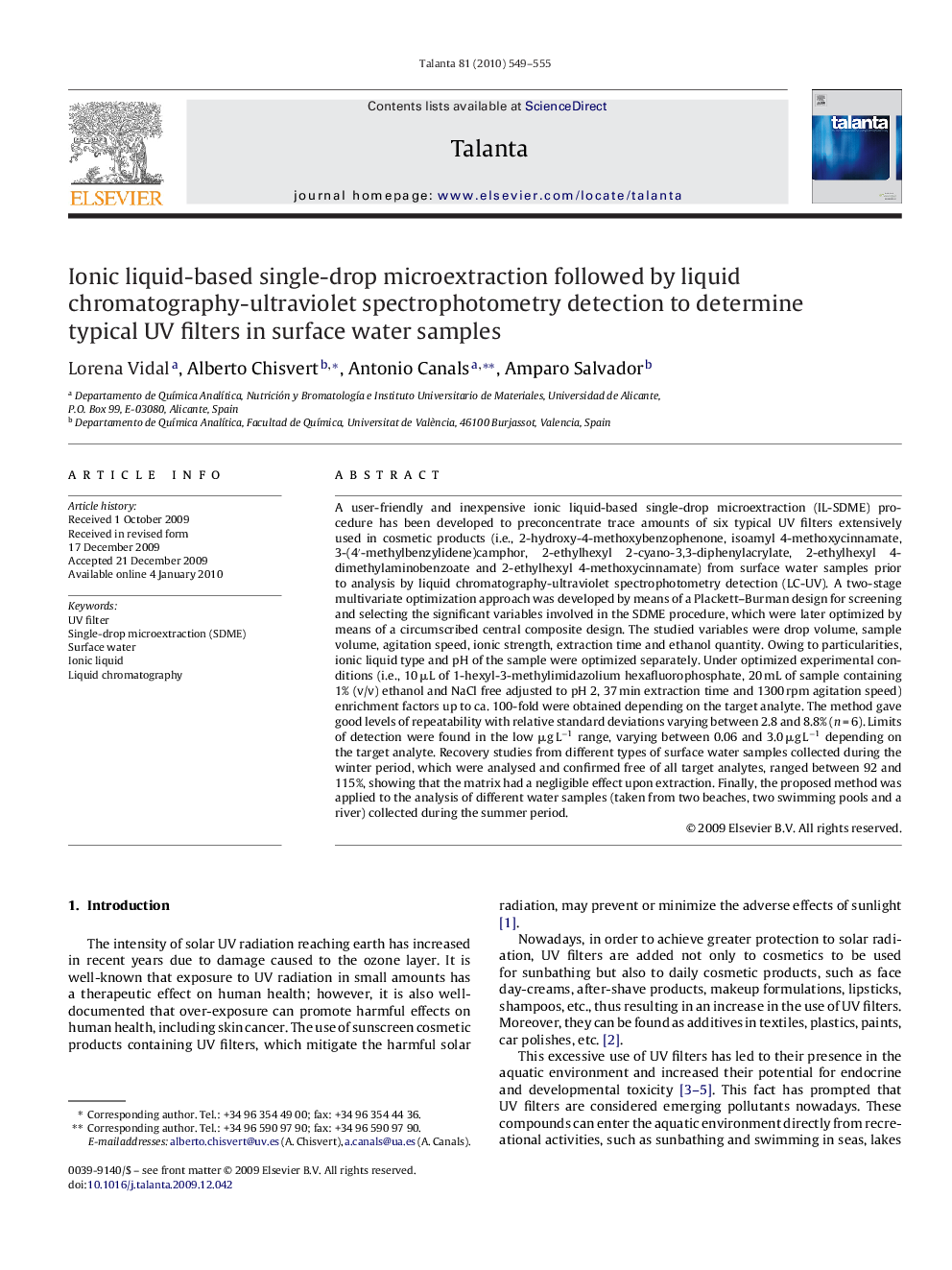| کد مقاله | کد نشریه | سال انتشار | مقاله انگلیسی | نسخه تمام متن |
|---|---|---|---|---|
| 1246686 | 1495851 | 2010 | 7 صفحه PDF | دانلود رایگان |

A user-friendly and inexpensive ionic liquid-based single-drop microextraction (IL-SDME) procedure has been developed to preconcentrate trace amounts of six typical UV filters extensively used in cosmetic products (i.e., 2-hydroxy-4-methoxybenzophenone, isoamyl 4-methoxycinnamate, 3-(4′-methylbenzylidene)camphor, 2-ethylhexyl 2-cyano-3,3-diphenylacrylate, 2-ethylhexyl 4-dimethylaminobenzoate and 2-ethylhexyl 4-methoxycinnamate) from surface water samples prior to analysis by liquid chromatography-ultraviolet spectrophotometry detection (LC-UV). A two-stage multivariate optimization approach was developed by means of a Plackett–Burman design for screening and selecting the significant variables involved in the SDME procedure, which were later optimized by means of a circumscribed central composite design. The studied variables were drop volume, sample volume, agitation speed, ionic strength, extraction time and ethanol quantity. Owing to particularities, ionic liquid type and pH of the sample were optimized separately. Under optimized experimental conditions (i.e., 10 μL of 1-hexyl-3-methylimidazolium hexafluorophosphate, 20 mL of sample containing 1% (v/v) ethanol and NaCl free adjusted to pH 2, 37 min extraction time and 1300 rpm agitation speed) enrichment factors up to ca. 100-fold were obtained depending on the target analyte. The method gave good levels of repeatability with relative standard deviations varying between 2.8 and 8.8% (n = 6). Limits of detection were found in the low μg L−1 range, varying between 0.06 and 3.0 μg L−1 depending on the target analyte. Recovery studies from different types of surface water samples collected during the winter period, which were analysed and confirmed free of all target analytes, ranged between 92 and 115%, showing that the matrix had a negligible effect upon extraction. Finally, the proposed method was applied to the analysis of different water samples (taken from two beaches, two swimming pools and a river) collected during the summer period.
Journal: Talanta - Volume 81, Issues 1–2, 15 April 2010, Pages 549–555